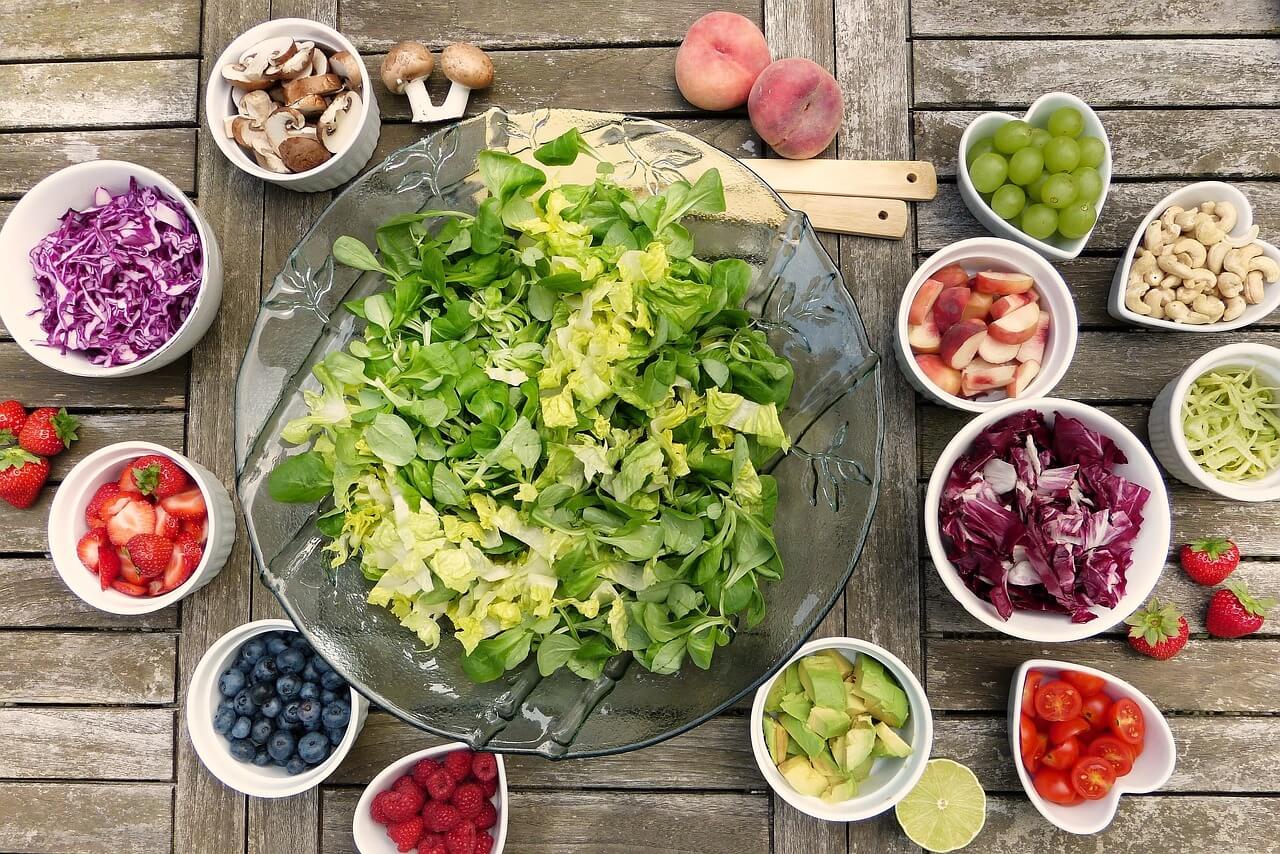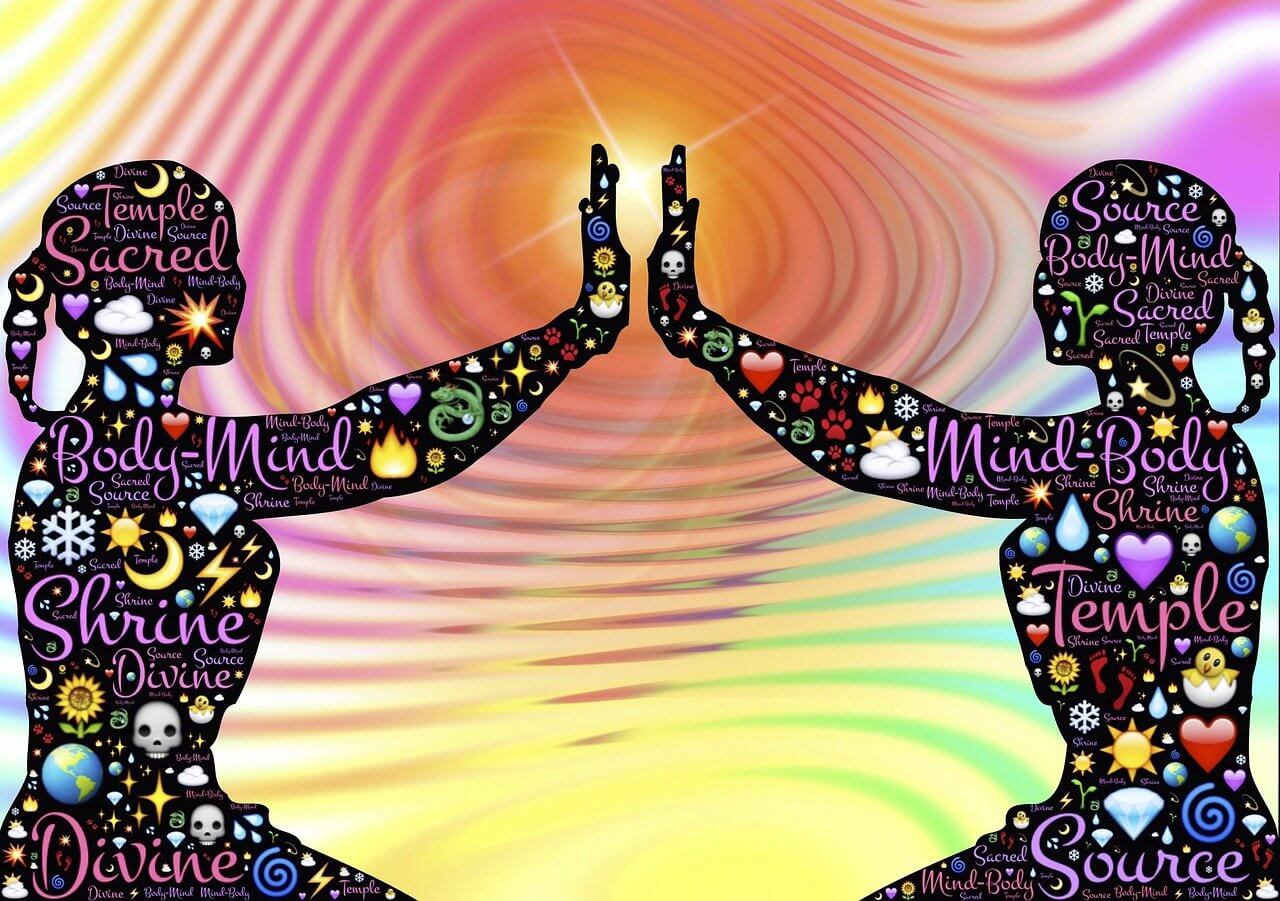Food is healing and when eaten with intention can heal.
Food can heal us in physical, psychological, and emotional ways.
When I was in the most intense period of grief in my early 20s I lived alone in the middle of a busy city. I felt both alone and not alone, which was the perfect combination for an introvert who was afraid to be completely alone. Living alone meant that no one was watching me and this is important for me to remember in my personal evolution. I do not count myself as someone watching me–which of course is a gross oversight.
Since I was alone I was free to rebel and I ate and watched t.v. My rebellion was essentially the same as a 10-year-old who gets to stay home without their parents for a night. What I ate was very significant for me, because I liked to feel fancy when I was a little girl. When my mom would take me to department stores I always wandered through the fancy dress section and tried on hats with feathers and veils. The iris was my favorite flower because it looked the fanciest with the frilly petals.
Fancy food that was also quick and easy: good bread, fancy cheese, shrimp cocktail, and apple pie. The pie is not necessarily fancy but certainly delicious.
I cooked sometimes too back then, but for the most part, I made myself these smorgasbord meals that I could eat in bed while watching t.v. I felt decadent and I knew it was wrong. As I look back on my food journey and my relationship with food I detect the idea of right and wrong foods and times of eating. Since I know that my attitude towards myself affects every aspect of my life; I realize that labeling foods and habits as good and bad or right and wrong may say more about how foods affect my health than the foods themselves.
Does this mean I can eat pizza, fries, and ice cream with abandon and as long I feel great about it then I won’t gain weight, feel bloated, or develop diabetes? I think not! The little kid inside me is always trying to find the easy out, but I’ve lived long enough now to know that there is no easy out to developing a relationship with food and my body. That’s not to say it has to be miserable, but it’s not a simple switch in the brain to flick on.
Consider my chosen fancy diet; there’s commonly considered bad food in there. Is that the reason I gained weight or is it a combination of the food itself and my relationship with my eating habits? The more I reflect on my life, the more I think it’s the latter: my relationship with eating and the foods themselves combine to create a healthful or unhealthful body. For the most part when I indulge in ice cream, pizza, mashed potatoes, or any of the commonly considered naughty foods I feel naughty–I feel like I’m trying to get away with something that is not allowed.
The voice in my head says: You are not allowed to enjoy food and look good!

And let’s face it that’s not just me–this is society’s voice in my head.
There are outliers: humans are too divergent for us all to be the same. Some people have the magical high metabolism that prevents them from gaining weight. I’m not sure if high metabolism also prevents food-related diseases. Since I don’t have high metabolism I never looked into that aspect.
Where to now?
The truth is–I’m figuring it out. I know that food is healing but there is no bullet point checklist to follow. I can’t say that if you eat brown rice and broccoli you will always be healthy. Food and eating and health are dynamic relationships–because we are dynamic. You know when you read a book or watch a film and the characters seem flat? That’s what happens when the writers consider the characters as stereotypes or aspects of a person as opposed to a whole person. A whole person has positives and negatives and can learn and change.
We are dynamic and our relationship with food and our health is dynamic. If we reduce health to a diet then we are cutting off our potential for a genuine relationship with food through an integrated mind-body connection.

The practice I’m on now is noticing and making conscious choices based on how my body and mind feel.
Last night I ate a fantastic carne asada burrito with veggies on the side. This morning I had a honey latte and a bagel with lox and cream cheese. I have eaten all of these things many times, but today after eating my breakfast my tummy felt–not so good. And I was stumped for a minute, I eat this breakfast combo often, almost every Sunday when I go to the coffee shop to work. Why this morning did it upset my stomach? Then I remembered my body was still digesting last night’s meal when I dumped cream cheese and steamed milk in there! I often think of my eating habits in terms of days and meals–but in reality, it’s all continuous as far as digestion is concerned.
I listen to a podcast, Insatiable, by Ali Shapiro. She has a program called, Truce with Food, which is a year-long exploration into your relationship with food and how to change that relationship into one that truly works for you and your health. I cannot afford to participate in her program, at this time in my life, but I highly encourage you to check it out. If like me her program doesn’t fit into your budget take advantage of the free resource–podcast. What stands out to me in her podcast is the emphasis on your relationship and your food story. Everyone is different, even when we have similar food and health challenges, how we got there is unique to us.
The other resource I follow is the blog, Butter Nutrition, by Catherine Crow. She has a range of services to fit various budgets and her blog posts are packed full of real-life nutrition info. The big takeaway from Catherine is that how you feel can change based on the foods you ingest. She is not a fad or trendy dieter and she uses nutrient analysis to help people figure out what their body needs.
The next resource is a book, Mind Over Medicine, by Dr. Lissa Rankin. Dr. Rankin is a medical doctor and the daughter of a medical doctor. Through her personal experience and thorough research she unveils the truth–that the mind & body are intricately connected in ways the yoga teacher down the street wouldn’t even consider. When I started reading this book, I thought this will confirm what I already know. Nope, brand new perspectives and ideas are based on her in-depth research of cultures around the globe. I cannot recommend this book more highly. Reading facts from a Western medical doctor has weight on our subconscious thinking because we have always been told to listen to doctors. Dr. Rankin takes the power in her white coat and uses it to empower us as individuals and empower our bodies to be the natural healers we are. One of the many takeaways from this book is the importance of rest & repair. Rest, the real kind not the mind is whirring as we lay down, is essential for the body to enter repair mode. Repair mode is part of the natural cycle of the human body–we all know that our body can heal a cut (Dr. Rankin’s example) we just need to protect that cut from infection and the body does the rest.
These resources are some of the numerous options out there on the internet and I am sure there are other solid resources that have the best intentions for helping people to find their healthy. What I look out for are diet plans that give you detailed meals and heavily emphasize low fat and low carbs. These plans are written by people who may have the best of intentions, but I think they are only looking at food as calories. Again, we are dynamic and our relationship with food is dynamic.
The Good, The Bad, and The Delicious
We can all make a long list of good and bad foods. And I wish I couldn’t. I wish that foods had never been labeled. I wish that we could all learn about food without the influence of society and family and friends. Here’s the thing about being human–we have to be part of society. No baby can survive alone–we need others, it’s how we were designed–or evolved. We cannot cut our cultural influences out of our heads. I know many adults whose eating habits (to various degrees) are influenced by their mom’s cooking. Mine too! Some of us rebel because mom (or dad) was a boring cook, or they rarely gave us homecooked meals, or the food at home was always diet-friendly. Some of us mimic the food we grew up on because it brings nostalgia and warm feelings.
What about me? What about what I find delicious and wholesome? How do I determine that?
The answer is not in a magazine or a diet article. I read nutrition info to gain information, but not to follow a regime. Currently, I’m experimenting with making chia pudding for dessert. I got the idea from the hot chia pudding trend and all the cute pics on Pinterest, but I decided to continue because my body and mind responded yum when I got the right texture and sweetness for my taste. If the response wasn’t yum then that’s not the right food for me.
I also started eating sauerkraut because I read that the fermented kind (no vinegar) aids digestion and promotes the helpful bacteria in our gut. I continue to eat it because I noticed a positive shift in my body’s digestion when I eat it on a fairly regular basis.
Everything that I have learned about how food is healing is through my own patience with noticing my body. Some people do this naturally, check out my blog on the three types, others of us have to learn how to notice and listen. It’s a learned skill and it’s open to us all–patience & practice makes us better.





